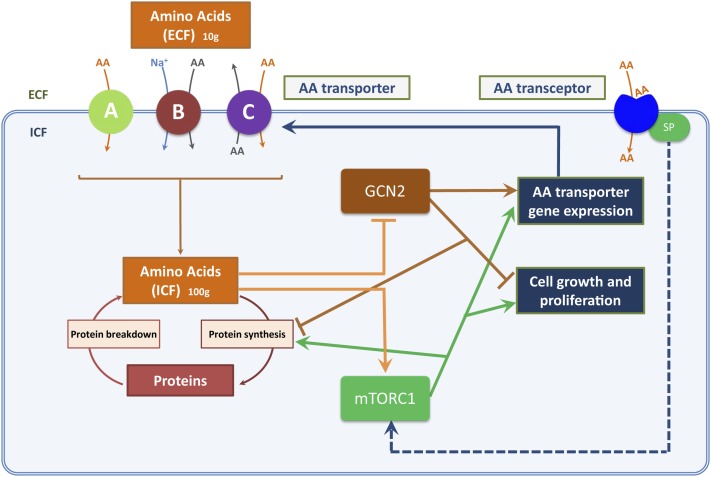FIGURE 2.
AA pools and nutrient sensing. Homeostasis of ECF and ICF pools of AAs depends on the balance between AA fluxes through transport and metabolic pathways. AA transporters function by specific mechanisms, which include uniport (facilitative transport; denoted as “A”), symport (cotransport; denoted as “B”), and antiport (exchange; denoted as “C”). Net delivery of AAs to the ICF pool by AA transporters in an adult consuming a balanced diet (equivalent to dietary AA intake at steady state) is ∼60–100 g/d (3, 66). The 2 major AA-sensitive signaling proteins in mammalian cells are GCN2 and mTOR (as part of mTORC1), which respond to changes in ICF AA concentrations as shown and regulate protein turnover (and hence cell growth). AA transceptors at the cell surface may also sense size and composition of the ECF pool of AAs. AA transceptors on intracellular membranes (not shown) may perform equivalent roles in sensing ICF pools of AAs. AA, amino acid; ECF, extracellular fluid; GCN2, general control non-derepressible 2; ICF, intracellular fluid; mTOR, mammalian target of rapamycin; mTORC1, mammalian target of rapamycin complex 1; SP, signaling peptide (this may generate or transmit the transceptor signal; see Figure 1 legend for further description).

